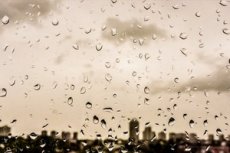New publications
Is rainwater fit for drinking?
Last reviewed: 29.06.2025

All iLive content is medically reviewed or fact checked to ensure as much factual accuracy as possible.
We have strict sourcing guidelines and only link to reputable media sites, academic research institutions and, whenever possible, medically peer reviewed studies. Note that the numbers in parentheses ([1], [2], etc.) are clickable links to these studies.
If you feel that any of our content is inaccurate, out-of-date, or otherwise questionable, please select it and press Ctrl + Enter.

Many people on the planet are experiencing a shortage of drinking water. This is due to global warming and massive droughts, which cause the drying up of small and large bodies of water. According to statistics, today at least 2 billion people suffer from a shortage of water for drinking. The question logically arises: is it safe to drink rainwater without industrial purification?
If you think theoretically, proper collection with boiling may well be enough to safely consume such water. But unfortunately, studies have proved the opposite.
The collected life-giving moisture can carry varying degrees of danger, depending on the region in which it was collected. For example, rain in a large city is much more "dirty" than in a distant forest or mountains. But even at a distance from industrial centers, the presence of microbes and viruses, dust and smoke particles, and various chemical agents in water is not excluded.
Thermal and chemical treatment makes it possible to neutralize an overwhelming number of undesirable components. However, despite this, experts advise against carelessness in this matter.
Scientists conducted a study in which they found out that rainwater contains poly- and perfluorinated alkyl compounds, which are characterized by toxicity. We are talking about a whole range of substances, including more than 1.4 thousand artificial chemical agents. They appear in water as particles from textiles, food packaging, Teflon utensils, etc., and are also present in water.
Perfluoroalkyl acids such as perfluorononanoic acid, perfluorooctane sulfonic acid, perfluorooctane sulfonic acid, perfluorooctanoic acid and perfluorohexane sulfonic acid have been shown to be harmful to human health (including carcinogenic effects).
In addition to oncology, the presence of these substances inside the body can lead to reproductive problems, impaired immunity, and diseases of the digestive and endocrine systems. The specifics of the harm of these acids to the environment are currently being studied.
It is worth noting that the above components are banned in most countries of the world, except China and a number of Asian countries. Acids do not lose their toxicity even after several years.
So how do toxic agents get into supposedly pure rainwater? Researchers took many water samples from various locations around the globe, including Antarctica and the Tibetan Plateau. All of the samples contained the substances in question to some degree. As scientists believe, the acids penetrate the atmosphere with ocean vapor, after which they are transported by clouds to all regions of the planet. This theory will be tested in the near future.
Given the potential harm of microplastic particles to human health, it is reasonable to assume that toxins from rainwater are unlikely to be neutral to the body as well.
Today, precipitation is actively used to collect water in many countries. How exactly this affects the health of people living there, experts cannot yet answer: the issue is still under study.
Details are described at aCS Publications
